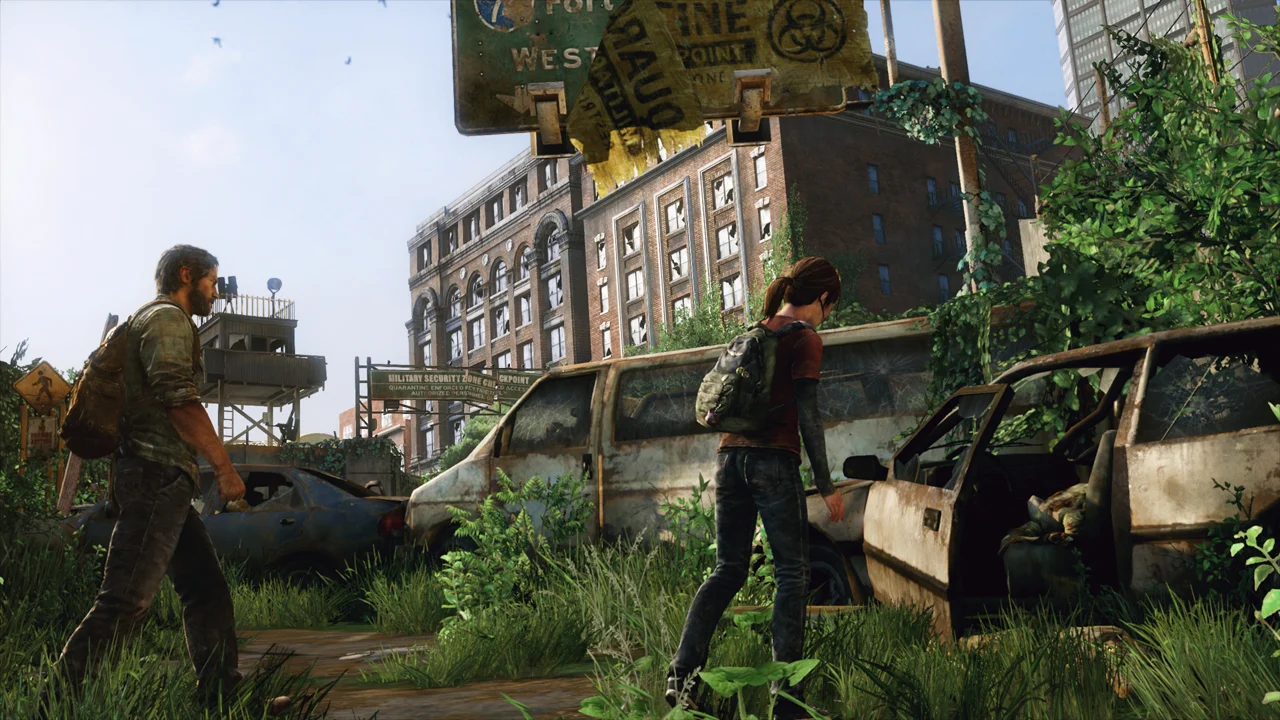No Return
Photo courtesy of Sony Computer Entertainment America LLC
I have a scrambled sense of direction. I was already a few months into my sophomore year of college before I could fluently navigate Northwestern’s campus, and only about six months later, I moved out of student housing and into a worn-down apartment building a few blocks west of the school. I had new grounds to decipher. Deeper into the suburbs, Evanston families live in kempt houses and apartments, but the space between campus and residents’ manicured lawns had been occupied by transient college upperclassmen for decades. As I floundered in the humid heat of my first Midwestern summer, I often became lost on my way home and had to improvise, exploring the area around my new address. Confused by my new but admittedly simple cityscape, I stumbled upon an unexpected grittiness.
Dirt alleyways cut across the roads. Overgrown grass swallowed up rusty fences. Thunderstorms crashed across the sky nearly every night. As a Los Angeles native raised on dry, desert heat, I wasn’t prepared for this sort of weather. Sometimes the storms continued into the morning’s early hours, flooding the streets and disrupting the train schedules. One morning in early July — the night after I’d read New York Magazine’s doomsday feature story called “The Uninhabitable Earth,” which outlined exactly how life on Earth was condemned to die at the hands of human pollution — I arrived at the metro station to see the usually empty platform overwhelmed by frantic professionals desperate to know how much longer the storm would delay their train. It felt chaotic, like maybe these weren’t normal weather patterns. The whole place seemed to be at the mercy of the elements.
In the middle of July, my boyfriend suggested we play The Last of Us (2013), a third-person zombie apocalypse video game in which you play as Joel, an experienced survivor in a world where many have been overtaken by a fungal pandemic. Throughout the game, Joel travels across a grim United States, littered with fast-moving zombies that are nearly impossible to fight off, with a teenager named Ellie, who could be the key to cure humanity. Ellie is immune, unlike Joel, but biological warfare aside, all human characters are vulnerable to the physical brutality the zombies inflict. As with most survival video games, shooting and other fatal forms of violence are heavily involved, yet The Last of Us also tells a complex, personal story. Joel grapples with the grief of losing his teenage daughter, who was killed by law enforcement in the chaos as the outbreak first emerged, years before the video game’s main narrative begins. Joel reluctantly notices the similarities between Ellie and his daughter, and his relationship with Ellie deepens as they face the harrowing darkness of their new, anarchic world.
Night after night, I joined Joel and Ellie on their grisly adventure, progressing through their year-long journey, which grew increasingly macabre from season to season. The occasional cutscenes — minutes-long videos that continue the story but require no action — allowed me to parse the intricacies of Joel and Ellie’s desperate situation in all of its emotional tumult. As I played, I noticed the dirt alleyways and the overgrown grass. I noticed all the places at the mercy of the elements (and of the monsters that nature had created). I saw a world in dire straits, but I also saw a world, though long past the point of no return, of possibility. It was a world that Joel and Ellie had no choice but adapt to and find enjoyment in. Offline, I forged ahead in my Midwestern reality, and Evanston began to transform.
Suddenly, my neighborhood became a dreamscape of adventure. Golden hour sunlight lit up gnats like fireflies. The gritty back roads revealed new passageways to discover and navigate. The persistent smell of dirt brought the promise of new excitement each morning as I stepped out onto the boiling streets. Even the bitter heat and the booming storms seemed cinematic in their presence. They demanded to be felt and heard, becoming powerful characters in the narrative of my Midwestern summer.
By night I played through Joel and Ellie’s world, and by day I played through my own. I felt the weight of my worries — about the planet’s future, about this unfamiliar area, about approaching the precipice of true adulthood with all the other college upperclassmen — transform into a curiosity about what lay ahead. Joel and Ellie’s world was torn apart and scary but still full of wonder. With extraordinary detail in both art and narrative, The Last of Us is a world of grave danger and incredible beauty that, albeit where terrifyingly fast and hostile monsters abound, is not entirely unlike our own.
Another thunderstorm shook the skies the day we finished the game. That night, I trekked home from work through the streets I still didn’t know by heart, but I kept my umbrella closed and pushed on through the rain. – A. Cydney Hayes
A. Cydney Hayes '19 studies journalism, political science and Mandarin Chinese at Northwestern University. She is an AEMJC award winner and has written for Curiosity, Unite 4 Goodmagazine, The Daily Northwestern and more. You can find more of her work and Bitters, her weekly blog about different coffee shops around Chicago and Los Angeles, at cydneyhayes.weebly.com.
For more information about The Last of Us (2013), and its upcoming sequel, click here.
Photo courtesy of Sony Computer Entertainment America LLC.


